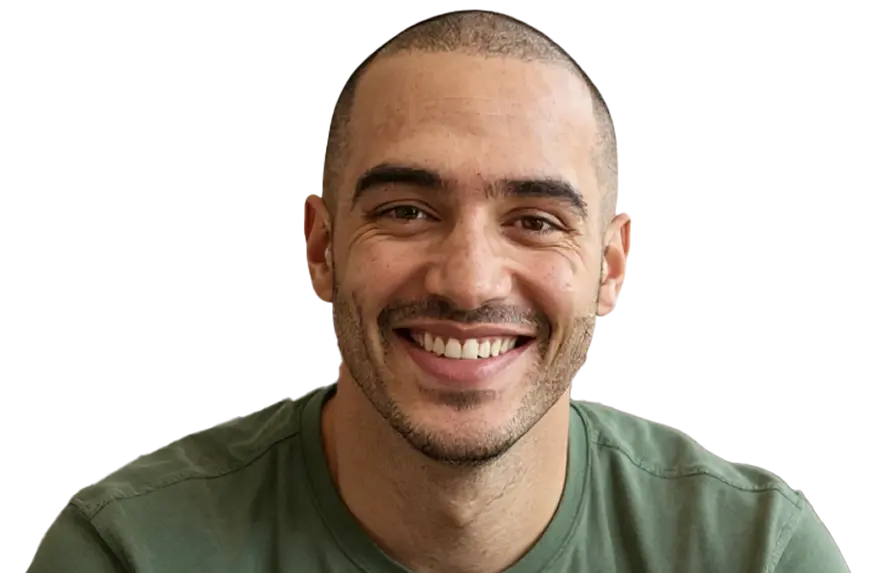What you’ll learn
This article addresses five common myths surrounding substance use that stop people from getting help. You’ll learn the facts about withdrawal, job protections under FMLA, how medications like Suboxone® work, and the importance of evidence-based treatment in recovery.
Across the country, thousands of people delay or avoid treatment for opioid use disorder (OUD) because of fear, misunderstanding, or even misinformation. Whether it’s worry about withdrawal symptoms, concern over job loss, or shame tied to stigma, these fears can be powerful enough to keep people struggling from reaching out, even when they’re ready for help.
We hear these concerns every day. Our licensed providers specialize in treating opioid use disorder and co-occurring mental disorders with evidence-based care. We help our patients understand their legal rights, options, and the science behind recovery, because the more you know, the more empowered you are to take the first step.
In this guide, we’ll break down five of the most common myths that stop people from starting treatment for opioid use disorder. And we’ll walk through what’s actually true, backed by medical insight, patient experience, and federal law.
Recovery is possible. But first, let’s clear up those myths about starting opioid use disorder treatment.
Myth #1: “I’m not ready to quit opioids.”
The truth: Many people feel conflicted about stopping opioid use, even when they know it’s harming them. That doesn’t mean you’re not serious about getting better. It just means you’re human, and addiction is complex.
Opioid use disorder is much more than a simple issue with willpower. It’s a chronic brain disease that affects motivation, behavior, and how your brain responds to stress, reward, and pain. You might still feel like you’re getting something from using, even if you’re also tired of the consequences.
This kind of internal back-and-forth is actually very common. According to the literature on motivational interviewing, many people with substance use disorder go through a phase of ambivalence before committing to change. That’s part of the process, not a failure.
What helps: You don’t have to wait until you feel 100% ready.
Counseling, mental health services, and support groups can also help you sort through your feelings without judgment.
Starting treatment doesn’t require you to have it all figured out. It just takes one decision to explore what’s possible when you’re not trying to do it alone.
Myth #2: “Opioid addiction treatment is too expensive.”
The truth: Cost is one of the most common reasons people avoid getting help. But today, treatment is more available than it may seem. One of the many reasons we built our platform was to make treatment more accessible, more affordable, and available to everyone.
Our self-pay model is often more affordable than a single emergency room visit and comes without the red tape of traditional systems. We believe cost should never be a barrier to care, and today, it doesn’t have to be.
Plus, thanks to laws like the Affordable Care Act and expanded Medicaid in many states, most insurance plans are now required to cover substance use disorder treatment in various health care settings. That includes Medication-Assisted Treatment (MAT) as well as therapy and support services.
Treatment doesn’t have to break the bank. The longer opioid dependence continues, the more it can cost your health, your job, and your safety. Investing in care now often saves far more in the long run, financially, emotionally, and physically.
Myth #3: “I should be able to quit opioids on my own.”
The truth: Wanting to handle things yourself is understandable, but opioid use disorder is a medical condition, not a matter of willpower.
Addiction changes how the brain works. It rewires the reward system, affects decision-making, and hijacks opioid receptors, making it harder to stop using even when you want to.
That’s why substance use disorder is recognized as a chronic brain disease.
Quitting “cold turkey” or without help often leads to painful withdrawal symptoms, intense cravings, and a high risk of relapse or opioid overdose. Receiving Medication-Assisted Treatment isn’t a sign of weakness. It’s the most effective way to retrain the brain, restore health, and reduce long-term risks.
It uses FDA-approved medications alongside counseling and behavioral therapies. It’s a research-backed approach that many major health organizations recommend as the first-choice treatment for opioid use disorder.
If you’ve tried quitting alone and it hasn’t worked, you’re facing a condition that needs real support. Help exists. And it works.
Myth #4: “If I get help for opioid use disorder, everyone will find out.”
The truth: Fear of judgment or being “found out” keeps a lot of people from getting treatment, but the reality is, the law protects your privacy.
Under the Health Insurance Portability and Accountability Act (HIPAA), your medical information is confidential. That means health care providers, treatment programs, and even your employer can’t access details about your substance use disorder diagnosis or treatment involving other drugs unless you choose to share.
If you’re taking time off work, the Family and Medical Leave Act (FMLA) allows up to 12 weeks of job-protected leave for medical conditions, including opioid use disorder treatment.
Your employer will only know you’re taking medical leave (not why), and they are not allowed to ask for specifics.
Stigma around substance use is real, but seeking help is not something to be ashamed of. It’s a decision to protect your life, health, and future.
Want to learn more about dealing with the personal side of opioid addiction? Check out our QuickMD Learning Center for more information, tips, and advice.
You have the right to get treatment without sacrificing your privacy or your dignity.
Myth #5: “I can’t handle the opioid withdrawal symptoms.”
The truth: Opioid withdrawal symptoms can be tough, but you’re not expected to go through it alone, and you don’t have to suffer to start recovery.
Medically supervised detox and Medication-Assisted Treatment exist for a reason. These evidence-based approaches help ease withdrawal symptoms, reduce opioid cravings, and lower the risk of relapse.
At QuickMD, our doctors can help you start addiction treatment using a low-dose induction approach. This method lets you begin your treatment more gradually, even if you haven’t fully stopped using opioids yet. It’s often an option for people worried about withdrawal from heroin, fentanyl, and prescription opioids, because it helps ease into recovery without such a harsh crash.
You’ll work with licensed doctors who treat opioid use disorder as a medical condition. They’re familiar with the legal side of treatment and can help make the process as safe and straightforward as possible. Feeling respected and supported matters. When stigma is reduced, people are more likely to stay in care, and care becomes more effective.
How QuickMD supports you through recovery with Medication-Assisted Treatment
Access to treatment shouldn’t feel like another barrier. We specialize in MAT for opioid use disorder, providing safe, judgment-free care from licensed providers, all from the privacy of your home. Whether you’re just starting recovery or need ongoing support, we make it easier to stay on track.
One of our patients shared this:
People in recovery are often treated with stigma, and it can feel like everyone’s seen the same, no matter your progress or commitment. I’ve been using QuickMD for the past three years, and it’s made all the difference. The doctors are kind, the process is simple, and I never feel ashamed for seeking support.
If you’re ready to take the next step or just need support staying where you are, we’re here to help. No stigma. Just care.
Frequently asked questions about opioid use disorder treatment
Is telemedicine a safe way to get treatment for opioid use disorder?
Yes. Telemedicine is now a widely accepted way to access care for OUD, especially for Medication-Assisted Treatment like Suboxone®. It gives you access to our licensed providers, often faster and more privately than traditional clinics.
Telemedicine with QuickMD can also reduce barriers like transportation, stigma, or time off work, making starting and staying in treatment easier.
What qualifies you for Suboxone®?
To qualify for Suboxone® (buprenorphine/naloxone), you need a diagnosis of opioid use disorder from a licensed provider.
This usually means you’ve developed a pattern of opioid use that’s caused significant problems in your life: physically, emotionally, or socially. If you’re struggling with opioid cravings, withdrawal symptoms, or ongoing use despite wanting to stop, you may be a candidate. A medical evaluation with one of our licensed providers is always the first step.
Does a relapse ruin progress?
No, a relapse doesn’t undo all your progress. It’s a setback, but it doesn’t mean you’re starting from zero. Recovery is about building long-term health and stability, and sometimes that includes difficult moments.
What matters most is getting back into care, learning what triggered the return to opioids, and continuing forward. Many people who succeed in long-term recovery have relapsed before. What makes the difference is what they do next.




